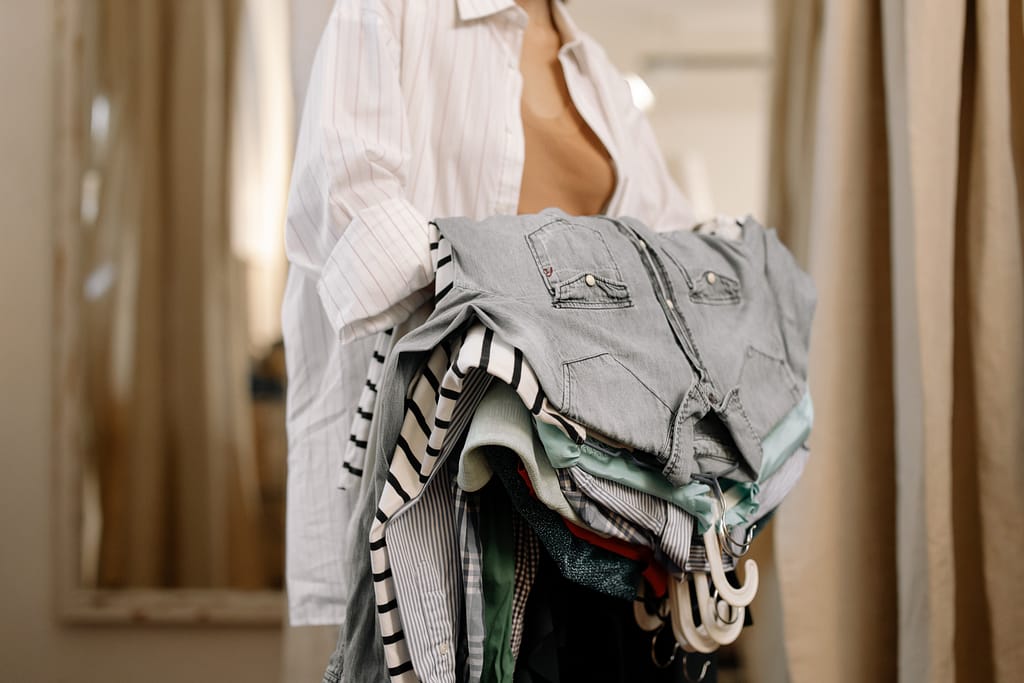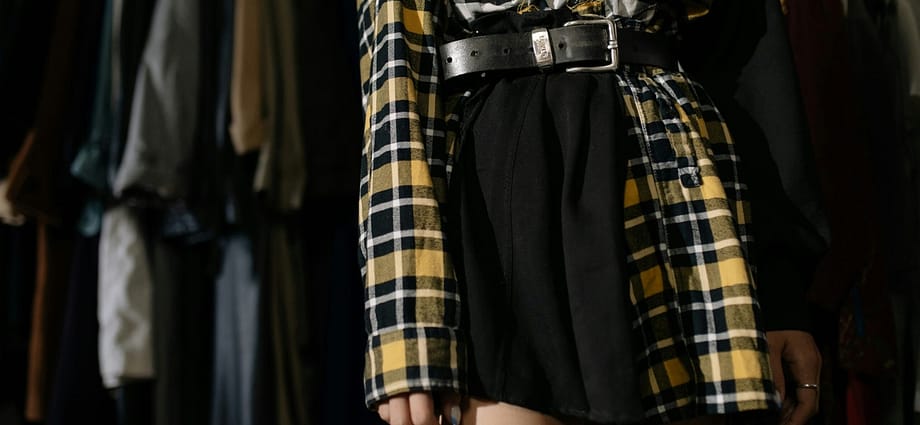The fashion industry has long been associated with trends and constant change. However, in recent years, there has been a shift towards a more sustainable approach to fashion. The repair and reuse movement has gained momentum, encouraging individuals to rethink their wardrobes and find ways to extend the life of their clothing.
Repairing and reusing your wardrobe not only helps reduce waste but also allows you to express your personal style in a unique and creative way. By embracing this movement, you can make a positive impact on the environment and still stay fashion forward. This is an exciting direction in the Fashion World!
Benefits of repairing and reusing your wardrobe

Repairing and reusing your clothing offers numerous benefits.
- Firstly, it helps to reduce the amount of waste generated by the fashion industry. Fast fashion has led to a throwaway culture, where garments are discarded after just a few wears. By repairing and reusing your wardrobe, you can break free from this cycle and reduce your carbon footprint.
- Secondly, repairing and reusing your clothing is a cost-effective way to stay stylish. Instead of constantly buying new items, you can give your existing wardrobe a new lease of life. With a little creativity, you can transform old garments into unique pieces that reflect your individual style.
- Lastly, repairing and reusing your clothing allows you to develop new skills and learn about the value of craftsmanship. By taking the time to mend and alter your clothes, you gain a deeper appreciation for the effort that goes into creating high-quality garments.
Environmental impact of Fast Fashion
Fast fashion has had a devastating impact on the environment. The constant production and disposal of clothing contribute to pollution, waste, and the depletion of natural resources. The fashion industry is one of the largest contributors to greenhouse gas emissions, with the majority of garments ending up in landfills.
The production of new clothing requires significant amounts of water, energy, and chemicals. From the cultivation of raw materials to the manufacturing process, each step in the production chain has a detrimental effect on the environment. By embracing the repair and reuse movement, you can help reduce the demand for new clothing and lessen the environmental impact of the fashion industry.
Identifying items for repair and reuse
Assessing your wardrobe is the first step in embracing the repair and reuse movement. Start by taking inventory of your clothing and categorizing them into items that can be repaired, altered, or repurposed. Look for garments with minor damages, such as loose buttons, broken zippers, or small tears, and set them aside for repair.
Next, evaluate the items that no longer fit or suit your style. These pieces can be altered or repurposed into something new. Consider donating or selling the items that are still in good condition but no longer serve you. By decluttering your wardrobe, you create space for new creations and make room for a more sustainable approach to fashion.
Tips for repairing and altering clothing
Invest in basic sewing tools and equipment
Learn basic sewing techniques
Take your time
Experiment with different alterations
(Such as adding embellishments, changing the length or fit or combining multiple garments to create something new.)
Let your creativity guide you and embrace the opportunity to showcase your personal style.
Creative ways to repurpose and upcycle old garments
Repurposing and upcycling old garments is a great way to breathe new life into your wardrobe. Here are some creative ideas to inspire you:

1.
Turn old t-shirts into trendy tote bags or cushion covers. Cut out the desired shape, sew the edges, and add any additional embellishments or designs.
2.
Transform old jeans into stylish shorts or a denim skirt. Cut the jeans to the desired length, distress the edges, and add any decorative elements such as patches or embroidery.


3.
Combine different fabrics and textures to create a unique patchwork garment. Use scraps from old clothes or fabric remnants to piece together a one-of-a-kind creation.
4.
Give old dresses a new lease of life by altering the neckline, adding sleeves, or changing the silhouette. Experiment with different alterations to create a garment that suits your style and body shape.

Incorporating vintage and second-hand shopping into your wardrobe
In addition to repairing and reusing your existing wardrobe, incorporating vintage and second-hand shopping into your fashion choices is a sustainable way to stay on-trend.
Vintage and second-hand clothing not only offers a unique style but also helps reduce the demand for new garments.
When shopping for vintage and second-hand clothing, take the time to explore charity shops, thrift stores and online platforms. Vinted has become one of our Favourite places for Wednesday’s World for second hand clothing!
By embracing vintage and second-hand shopping, you can discover hidden gems and add a touch of nostalgia to your wardrobe!

Support Sustainable fashion brands

As the repair and reuse movement gains momentum, sustainable fashion brands are progressively emerging. These brands prioritize ethical and eco-friendly practices throughout their entire production process. By supporting these brands, you can make a positive impact on the fashion industry and encourage others to do the same.
Look for brands that use organic or recycled materials, practice fair trade, and prioritize transparency. These brands often have a smaller environmental footprint and promote social responsibility. By investing in high-quality, sustainable pieces, you can build a wardrobe that lasts and supports a more ethical fashion industry.
the repair and reuse movement
Introducing the repair and reuse movement with your wardrobe is a powerful way to make a positive impact and stay fashion forward. You can reduce waste, save money, and develop new skills.
Assess your wardrobe, identify items for repair and reuse, and get creative with alterations and repurposing. Incorporate vintage and second-hand shopping into your fashion choices, and support sustainable fashion brands.
Start making a difference today and create a wardrobe that is both fashion forward and eco-friendly!

